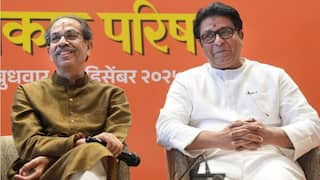Play Areas For Children: A Budding Concern In Indian Cities
Increasing green cover, making neighborhood-level pocket parks accessible to young children, and providing equal access to play is critical to achieving sustainable and equitable urban growth.

Parents frequently use phones and tablets to comfort or divert their toddlers, but recent research reveals that such devices cause emotional dysregulation in children aged 3 to 5 years. Unfortunately, as a result of the Covid-19 pandemic, the use of electronics among children of all ages has skyrocketed. Furthermore, for two years, opportunities to socialise were severely limited, particularly for smaller children, who were unable to explore their neighbourhood and benefit from the interactions required for developing social and emotional skills.
In an interview with ABP Live, Sreekumar Kumaraswamy, Program Director of Sustainable Cities and Transport, WRI India said, "One morning after the pandemic lockdown restrictions eased, I took my two-year-old, Nila, to a local park. While heading for the swings, she noticed a puddle of water, and started playing in it. She enjoyed the sensory experiences of water, mud, and sunshine, collecting stones and leaves, and petting the park cat."
"A few passers-by gave me disapproving looks, while others nodded and smiled. I wondered if there was a bathroom nearby where she could wash up. It was the monsoon, and for Nila, the rainwater and slush were the real attraction, rather than the play equipment. Clearly, her idea of play did not match the regimented view of it as conceived by adults. This got me thinking that if we design our neighbourhoods to enable free play, including nature-based elements more children would be attracted to them," he added.
Studies show that up to the age of 5 years, millions of synapses are developed in our brain every second. Brain development in this period shapes the cognitive abilities, and emotional and social skills, that sustain well into adulthood. Safe and accessible public spaces that offer nature-based experiences provide the ideal environment for holistic development.
Sreekumar further said, the Indian context presents two challenges in this regard. The first is the lack of quality public spaces easily accessible to all demographics, and the second is a poor understanding of the specific needs of young children. The colourful plastic play equipment, ubiquitous across Indian cities, demarcates play areas.
However, it is inadequate to enable moments of discovery and contemplation. We need to facilitate natural experiences and accommodate free imaginative play. Additionally, play areas must be designed to address the needs of different age groups, he added.
"The extent of play space that young children get to explore has shrunk over the years. My daughter Nila, for instance, gets to explore only a fraction of the area I had access to as a child," Sreekumar said.
According to Sreekumar, among the Indian cities addressing such concerns is Indore. It is leading the way by developing around 500 parks and city forests in many neighbourhoods as part of its climate-responsive urban development plan.
These neighbourhood parks will have local plant species, rainwater harvesting, compost pits, micro forests, and open play opportunities for different age groups. Indore Smart City Development Limited is promoting play settings that use natural materials such as recycled wood, he added.
Studies show that young children need 30 to 60 minutes of outdoor play every day. Given the unequal distribution of open spaces in Indian cities, many children, particularly in vulnerable communities, lack access to safe public spaces in their immediate vicinity. This points to the need to create several smaller play spaces near homes, by reclaiming residual and underused areas in neighbourhoods.
Kochi city, for instance, is reclaiming residual spaces along a street frequented by women and young children, equipping it with flexible play opportunities and seating provisions for caregivers, Sreekumar stated.
In Kohima, a local community in partnership with the local municipal body has reclaimed an abandoned small space and transformed it into a compact child- and family-friendly parklet with a sandpit, climbing frames, and seating areas. Locals there have a much-needed recreational spot in the land-starved hill city, he added further.
Addressing disparities needs concerted effort. Sreekumar highlighted that the city governments of Rourkela and Warangal are also taking steps to address the needs of underserved and vulnerable communities. "Warangal has converted a dumping ground in a low-income area into a park, thus offering play and socialization opportunities to young children who previously lacked access to well-planned public spaces. Similarly, Rourkela is developing open play spaces to allow children to indulge in a variety of indigenous play forms. These are monitored and maintained by local women leaders from the self-help groups. Another program in Rourkela trains frontline workers (anganwadi teachers) to encourage children to grow kitchen gardens in anganwadi premises," he added.
More than 37 million children under the age of 5 live in urban areas across India, according to Census 2011 data. Thus, access to green, open play spaces is the need of the hour. Increasing green cover, making neighbourhood-level pocket parks accessible to young children and their caregivers, and ensuring that all city neighbourhoods have equal access to play, are crucial to ensure sustainable and equitable urban development. Child-oriented public spaces make neighbourhoods more liveable and make public spaces safe and welcoming to all.





































